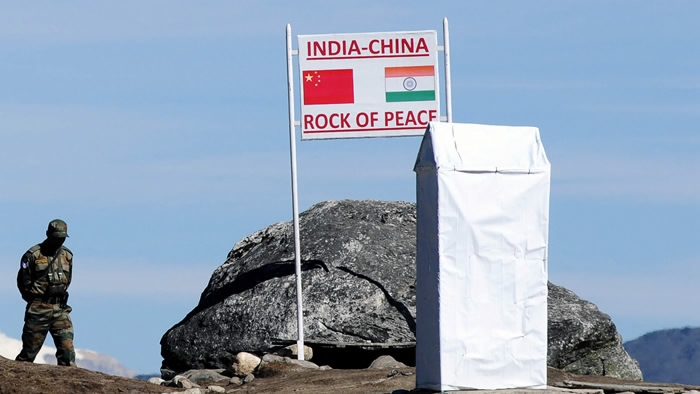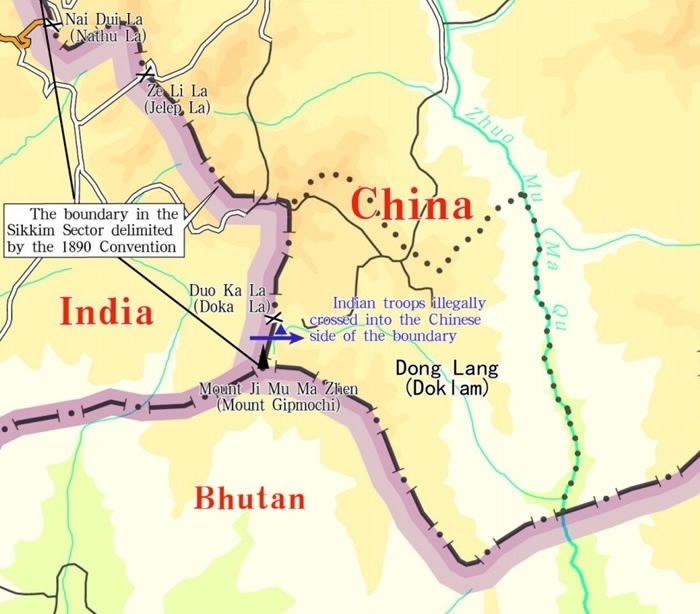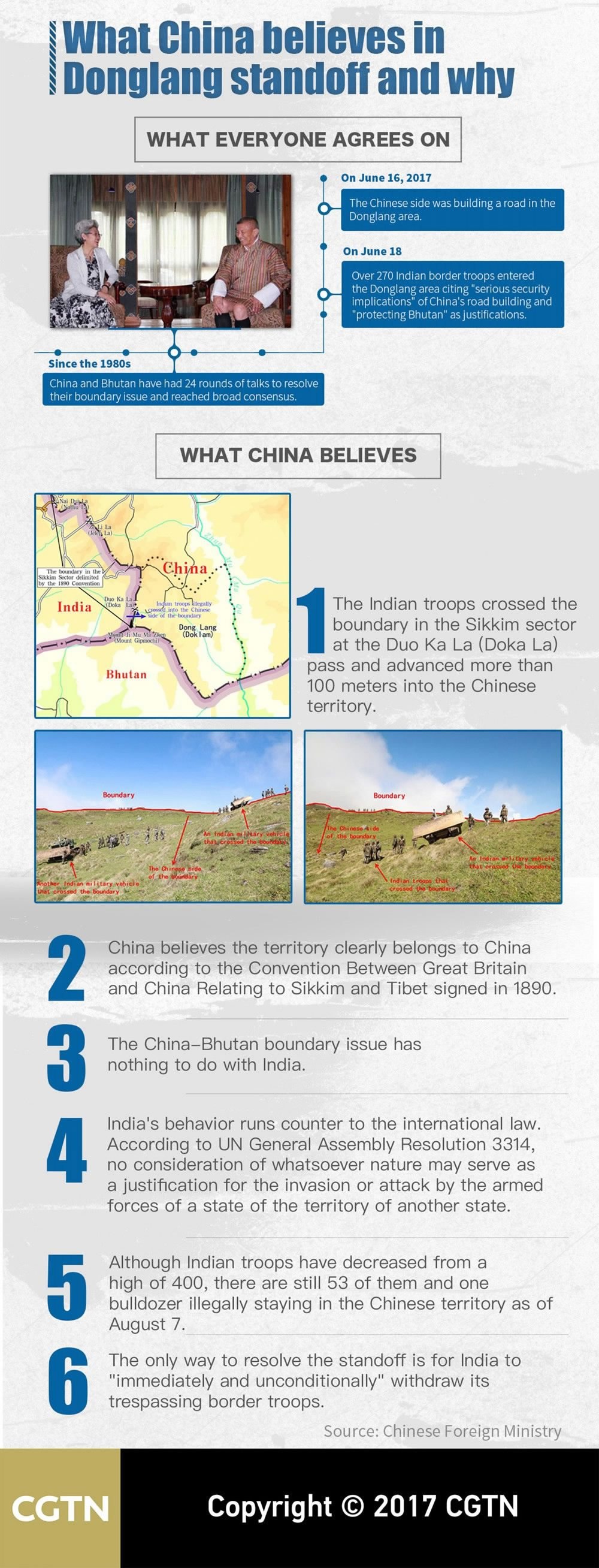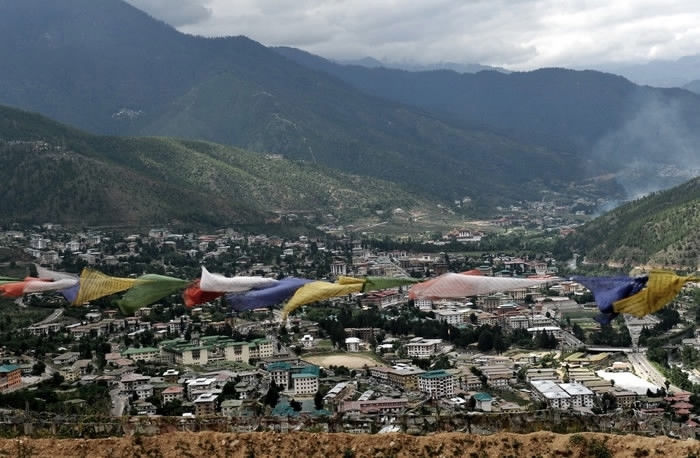
Politics
22:57, 18-Aug-2017
Beijing outlines three reasons behind China-India deadlock
CGTN

Two months have passed since the standoff between China and India in the Donglang area began. On Friday, Japanese Ambassador to India Kenji Hiramatsu indicated Tokyo's backing for New Delhi. In response, Chinese Foreign Ministry spokeswoman Hua Chunying explained why the deadlock has lasted so long.
"Maybe the Japanese ambassador in India really wanted to voice his support for India," Hua said at a regular press briefing on Friday afternoon. "But I want to remind him not to randomly make comments before learning relevant facts."
Hiramatsu said earlier Japan understands that "India is involved in this incident based on bilateral agreements with Bhutan." He urged all parties involved not to unilaterally attempt to "change the status quo by force.

A sketch map of the site of the current standoff between China and India. /Photo via Chinese Foreign Ministry
A sketch map of the site of the current standoff between China and India. /Photo via Chinese Foreign Ministry
"I want to emphasize three facts," Hua said.
Firstly, there is no territorial dispute in the Donglang area, she noted, adding that the delimited boundary between China and India in the Sikkim sector has been recognized by both countries for 127 years.
Secondly, it was India that attempted to change the status quo by trespassing the border line, not China, she stressed.
Thirdly, India must "immediately and unconditionally" withdraw all its trespassing troops and equipment, which is the "precondition and basis" for the two sides to resolve the standoff and conduct "meaningful dialogue."
The United States recently called for direct dialogue between China and India to resolve the issue.

CGTN Graphic
CGTN Graphic
Does Bhutan want India's 'protection'?
According to the Chinese Foreign Ministry, the ongoing standoff began on June 18 after over 270 Indian border troops crossed boundary in the Sikkim sector and entered the Donglang area, over which China has indisputable sovereignty.
India cited "serious security implications" arising from China's road building in the area and "protecting Bhutan" as justifications for its move, which China called "untenable."
As of August 7, there were still 53 Indian troops and one Indian bulldozer illegally staying in the Chinese territory, the Chinese Foreign Ministry said last week.

Prayer flags flutter over the Bhutanese capital of Thimphu, June 16, 2015. /AFP Photo
Prayer flags flutter over the Bhutanese capital of Thimphu, June 16, 2015. /AFP Photo
Beijing has stressed the boundary issue between China and Bhutan has nothing to do with India and that India has no right to "make territorial claims on Bhutan's behalf."
Caught between the two powerful rivals, Bhutan has shown little gratitude for India's interference and does not want to offend either country, a report by The New York Times indicated on Tuesday.
The Bhutanese government has so far avoided saying whether it asked India to intervene in China's road building in Donglang, and Bhutan's media have said "virtually nothing" about the standoff.
Many Bhutanese feel the so-called "protection" by India has become "suffocating" and suspect that New Delhi intends to "block Bhutan's efforts to establish diplomatic relations and expand trade with Beijing," the report said.

SITEMAP
Copyright © 2018 CGTN. Beijing ICP prepared NO.16065310-3
Copyright © 2018 CGTN. Beijing ICP prepared NO.16065310-3